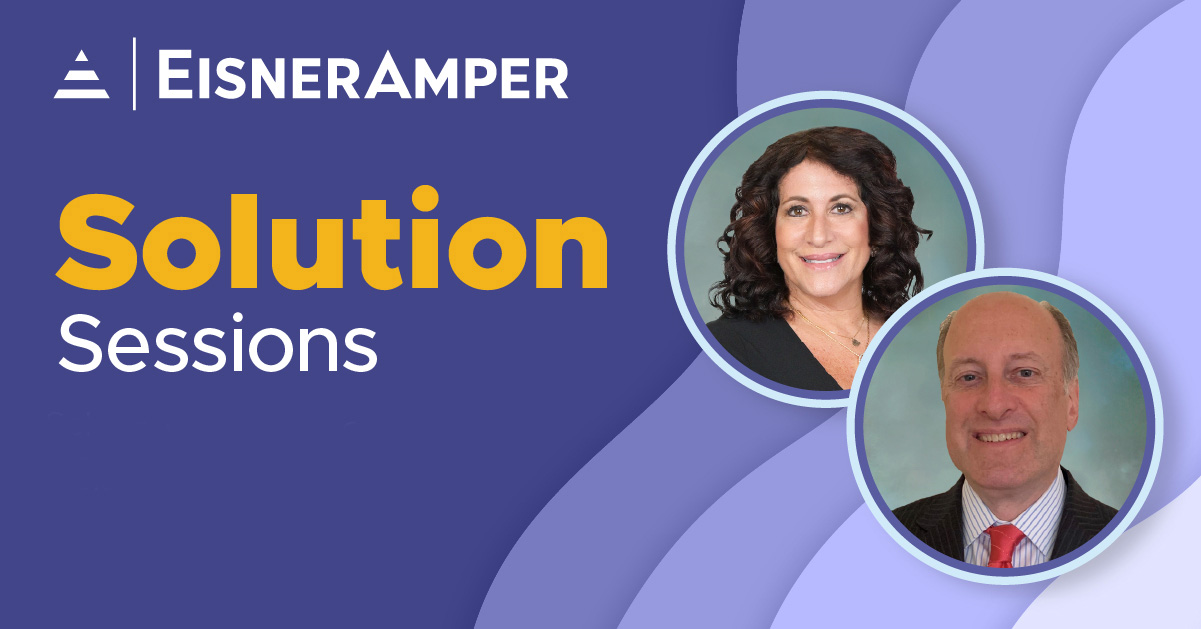Problem Solving and Cohesion in Family Transition
- Published
- Nov 18, 2021
- Share
Understand a pathway for entry and the potential for people to come together with structure while not feeling hemmed in. It’s important to practice the transition before real life stressors get in the way.
OUR CURRENT ISSUE OF RISE (Real Ideas to Stimulate Engagement)
Transcript
natalie mcveigh: Hi, we're here today to talk about joint problem solving and cohesion in an X generation either sibling or cousin group. So, I'm Natalie McVeigh, and then joined by my colleague, Dr. Matt Kerzner. We're both directors in the Center for Individual and Organizational Performance, as well as the Center for Family Business Excellence. So, we all know that family businesses have challenges transitioning through the generations.
We're going to talk later about why entrepreneurs have a hard time leaving, but we're really going to focus on how you can transition successfully. So, problem-solving and cohesion, as well as being a learning, agile, resilient family are part of the research on 100-year families that make transition. So, Matt, when we work with families, what are some of the things we do to create pathways for that?
matt kerzner: Yeah, it's a very important topic here. So, one of the things that I like to do, or we like to do in the center is to work with the next generation and getting them ready. And that could be siblings, brothers and sisters, it could be cousins, depending on the size of an organization. So, we put, what we call, this sibling or partner or cousins code of conduct. It's like a psychological agreement about how decisions are going to be made, how they communicate, how they debate, how they will get along, how compensation is going to work amongst the family, and some of the other critical things that we get into when we are working with the family is we talk about clear roles and responsibilities. What roles does each of the family members play within the organization?
Number two is we get into path of progression. And what we mean by that is at different stages within a family's career, within the family business, what roles will they play? How are they growing and developing into that leadership or ownership role? So, these are some of the critical things that we work on when we're dealing with this sibling code of conduct or what we call this partner code of conduct.
NV: That it makes a lot of sense, and it sounds like that would really increase the cohesion in families.
MK: Yes, it does. Through the dialogue, through discussion, through debate, through understanding the organization and family and ownership's mission, vision, and values, they could use that as their kind of, what I call, compass to help them make some of these critical decisions of how they're going to work together.
NV: I love that language, the idea of a compass, because we really don't know where we're going to go or where we're starting unless we agree to some aspects. So, when we think about cohesion, the way that we think about cohesion, it's really a variable of rigidity to flexibility, as well as disconnected and connectedness. And you might think that for any other diagram being over here, the most connected and the most flexible might be useful, or at the very bottom, the most rigid and the most disconnected. And what we find is you really want to find that target in the middle for families and figure out where you are, when you are, how useful that is. And as Matt's describing all of these behaviors, communication is the facilitating variable to ensure that cohesion continues. So, tell me what else is useful in these kinds of processes?
MK:Transparent communication is very critical. People need to be able to share how they're feeling, what resistance they're having with whatever they're trying to do, and realistic what their potential is. That's another issue, right? A lot of times in family businesses people are in positions and it's not necessarily their sweet spot. So, when they're working on this sibling code of conduct or kind of like this process and they clarify the roles and responsibilities of what they're going to play, they get a sense of comfort knowing they're adding value to the organization and the family.
NV:And it seems to me they get to practice in a safe way. So, we're working on this document that is important, it might not be in place today, but it's much easier now than when a CEO has exited or when someone has passed away.
MK:Yeah, so I'm curious, Natalie, when you work with your clients and you're putting this plan together, what's your approach?
NV:Very similar, Matt, I think the important thing when we work with clients is to give them real life problems to solve, to work together, to understand what's going on. We'll talk about assessments later, but if you and I are different as we're creating this and we're creating that reasonable tension, under stressful circumstances that's much more challenging. So, it really is to say, "How do we today start working on the skills we're going to need tomorrow, and persevering through?" Because one of the biggest challenges I see with my clients, and I'm sure you see it with yours, Matt, is, "Well, this document doesn't matter yet," or, "I don't get to make the decisions yet." And if we wait too long, either as the current power holding generation to give some of that, and if those underneath are waiting until they fully receive it before we do this work, it's too late.
MK:Yeah, I agree, one of the important things that we do as a center is we actually help control the emotion before the emotions take over. And by putting this code of conduct or this plan together early on in an organizational journey could help really put that path forward in the future without the emotions taking over.
NV: I love that. One of the things we do really well is we, and it's all the rage now, is we gamify some of these skills. So, pre-COVID, I used to play a game called Pandemic, which we've put a pause on right now, it's a little too close to home, but it's highly collaborative, and it's so interesting to see, even though I'll hand the card down for Matt's role, and it's on the table, and everyone picks theirs up even though it was supposed to be seen. And you will find out that it takes people a while to realize we can win by working together. So, not only will we work hard, we'll have a lot of fun.
MK:That's great, and, Natalie, before we close, how long does it take from your perspective working with families putting some type of a code of conduct together?
NV: Yeah, it depends on each family. Lots of families come to us wanting those documents. So, they might beg for a code of conduct first or a family charter. I don't start there because really discussing and being clear on what's going to be there is the most important piece, it can take six months to two years. The research on sibling teams though, is it says it takes six years over the age of 12 working consistently to do this, being in the same household. So, none of us are born sibling teams, cousins aren't either, so six months, a year, could be three years depending on the family. How about you?
MK: It's a valid point, I'm an action oriented person, so I like to move it along a little bit faster. However, every family is different, and I'm learning through working with families that I always tell them they're in the right place at the right time and they're doing it the right speed, right?
NV:I love that.
MK:Because everybody's different. So, it's so hard, but I like the stats because it doesn't happen very quickly. So, I always encourage families to start young and start growing.
NV:Awesome, well, it's been a pleasure, Matt, thanks.
MK: Thank you.
Transcribed by Rev.com
What's on Your Mind?
Start a conversation with Natalie










